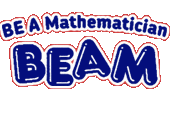Number and Place Value
This collection of resources supports the teaching of Number and Place Value in primary mathematics. These activities are linked to the year groups containing the corresponding content in the National Curriculum.
Here are some favourite activities selected by the NRICH team.
-
Same Length Trains (Y1) How many trains can you make which are the same length as Matt’s, using rods that are identical?
-
That Number Square! (Y2) Exploring the structure of a number square: how quickly can you put the number tiles in the right place on the grid?
-
Coded Hundred Square (Y3) This 100 square jigsaw is written in code. It starts with 1 and ends with 100. Can you build it up?
-
The Deca Tree (Y4) Find out what a Deca Tree is and then work out how many leaves there will be after the woodcutter has cut off a trunk, a branch, a twig and a leaf.
-
Round the Four Dice (Y6) This activity involves rounding four-digit numbers to the nearest thousand.
These are just a few of the activities on Number and Place Value that you can find on the NRICH curriculum pages.
The activities below, taken from the STEM Learning website, complement the NRICH activities above.
- ALL
- Teacher guidance
- Textbook
- Activity sheet
- Other
Teacher guidance
Interactive Teaching Programs 3
The Number grid ITP generates a 100 square grid in which individual cells can be hidden or highlighted in different colours. The prime numbers and multiples can also be highlighted. A useful visual tool when teaching number recognition and counting.
Textbook
Place Value and Number Systems
This resource contains games, investigations, worksheets and practical activities, which help children to think about place value and aid discussion.
Pack One contains an activity called Largest and smallest in which children choose three digits and make the largest and the smallest numbers they can. This could be adapted for use with a larger number of digits. Encourage discussion on why they placed certain digits in certain places and created their numbers. Another idea could be to use a selection of numbers children have created and ask the class to order them from smallest to largest.
The activity Putting in Order involves children writing numbers in order of size. They could go on to explain the strategies they used to complete the task.
Activity sheet
Starting Number Skills
A treasure chest of 40 activity work sheets and games linked to many of the mathematical topics for younger primary learners. A further resource Go Further with Number Skills supports older primary learners.
Many activities allow younger learners to become confident at recognising numbers as numerals and pictorial representations before recognising them as words. Sheets 1 and 2 help children practise recognising and ordering numbers. On sheet 5 (page 19) children recognise numbers from pictorial representation, then write the number in numerals and words. Sheet 27 (page 61 on pdf) practises placing numbers on number lines. Sheet 36 looks at recognising and ordering numbers.
Both books support children in using and applying number. They may be used as the basis for an investigation in class, or as consolidation of learning.
Compare Bears Maths - Book 1
The activity on page 84 of the PDF looks at counting in twos using the bears, this could be also used to develop the idea of counting in fives. Following on from this activity children could be set the challenge of finding out how many bears are left when given an odd number and asked to count them in twos or fives.
Place Value
This whole class game allows children to practise reading three digit numbers and recognizing 'place value'. The game follows the familiar "I have... Who has?" around the class format where children read a statement about their number and ask a ‘who has’ question. Whoever asks the question on the final card will find that the corresponding answer is on the first card - completing the circle. The game can be adapted so children have either one card each or work together in pairs small groups with a selection of cards.
Other
Place Value, Ordering and Rounding
A wide range of activities including challenging problems and puzzles, open-ended investigations, cross-curricular activities, and resources to practise and consolidate students' mathematical understanding of place value, ordering and rounding. Resources are packaged for 5-7 , 7-9 and 9-11 year olds.
Place Value Games for 9-11 provides the following games:
- Aim for 500 - in this game both players roll the dice and use the numbers to make two three-digit numbers, then add them up. Whoever gets a total closest to 1500 wins the game.
- Making numbers - students create two four-digit numbers from digits generated by rolling a dice before deciding which is the highest.
- Mastermind - using a two-digit number one player tries to discover the number by being given clues relating to the place value of the digits.









